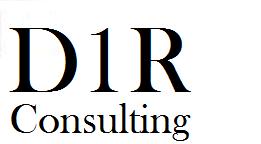Tasting Rooms Part II
- Details
- Published: Sunday, 10 June 2012 14:34
- Written by David DeCiero
The first part of this article described some aspects of tasting rooms dealing with external and interior appearance and the initial greeting.The next part focuses on the actual tasting.This is the most critical thing to closing the sale and potentially creating repeat customers.After all, if the tasting doesn’t go well, and you’re selling wine, you won’t make the sale.
Once the greeting has occurred, or not depending on how well the place is run, I look to see the terms of the tasting.This should be clearly visible in terms of what wines are available for tasting and the terms for the tasting. For instance, it is nice to see a list of the wines than can be tasted, the charge for the tasting, and how many wines I can taste.This information helps me as the customer make a decision about whether it is fair or not.The worst thing would be to surprise your customer, they should know exactly what they are getting.On this topic, there has been some debate about tasting fees.Most consumers are willing to pay a small fee (up to $5) per person for the tasting.Some old school customers may balk at the idea, but even those people are coming around to the new way.So, as long as it is clearly spelled out and the customer has an expectation, things should go smoothly.
Now comes the best part, or worst, tasting the wines.The setup should be pretty basic, a glass, a spit or dump bucket, along with some water with its own glass and some food to clear the palate.If a place is missing any of these, then you will have a problem tasting the wines.Now, the water and its own glass is pretty rare, but it’s a good extra step to ensure your customerscan truly taste your wines.Mixing the water in the wine glass and then pouring new wine into a glass with residual water will change the wine immensely.Now that the setting is in order, the server plays a huge part. The first thing is that the server should be paying attention and not make you feel rushed.This shows the customer that you care about their time and experience in the tasting.Don’t rush through the process to move onto the next customer, or make them feel that they are just one more guest.The server has to make the customer feel special and part of the wine’s experience.For winery owners, make sure your staff know this, since they are the face of the winery to your customers.
The next step is the actual tasting.The biggest mistake here is that the server tries to tell you what you will experience.This is a big mistake made by many people.The customer has to tell you what they think of the wine, not the other way around.This is a great chance to get feedback from actual customers, but servers hardly ever take it (or write it down).Let the customer create their own experience with your wine.Nothing is more annoying than telling me how great a wine is and how it has a hint of this and that.First, it almost always disappoints and I never get the hints of this or that.One time, we had a massively overoaked Chardonnay that the server told us had a “buttery, creamy texture.”I told her that all I could taste was the Spanish Armada after Trafalgar.(She didn’t get it).Point is, it ruined her credibility.

